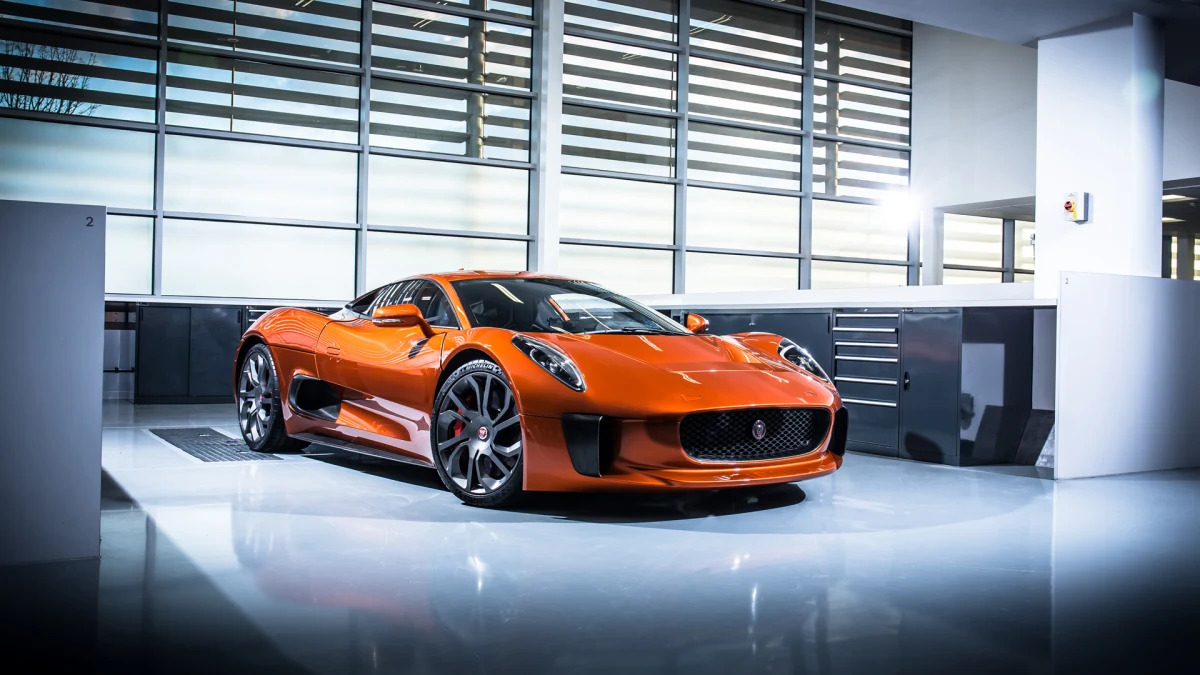It is ironic that a British car company, steeped in the European sports-car tradition and now owned by an Indian industrial conglomerate, will ambitiously be seeking to attract customers in the United States with, of all things, a truck. But there it is: Jaguar's beefy F-Pace crossover, the first SUV in the company's 80-year history, hit the ground last month at the Frankfurt motor show. The F-Pace – along with the new XE sedan designed to take on the BMW 3 Series and Audi A4 both in Europe and on these shores – is spearheading the brand's hoped-for turnaround on this side of the Pond.
In the States, Jaguar is still a big player for Tata Motors of India, which bought Jaguar Land Rover from Ford for $2.3 billion after months of back-and-forth negotiations in 2008. It seemed like an incredibly brassy move at the time, when the economy worldwide was reeling and Britain's automotive industry was on its heels. And while the Jaguar brand name has a grand historical resonance, in the first nine months of 2015 it moved just over 11,000 cars in the US, down five percent for the same period the previous year. But if Porsche can capitalize on SUV sales, so can Jaguar.
The tea leaves are promising come next spring, when both new premium luxury models arrive in the US. The F-Pace will have a starting price of about $43,000; the sedan range starts at a competitive $35,000.
In the States, Jaguar is still a big player for Tata Motors of India, which bought Jaguar Land Rover from Ford for $2.3 billion after months of back-and-forth negotiations in 2008. It seemed like an incredibly brassy move at the time, when the economy worldwide was reeling and Britain's automotive industry was on its heels. And while the Jaguar brand name has a grand historical resonance, in the first nine months of 2015 it moved just over 11,000 cars in the US, down five percent for the same period the previous year. But if Porsche can capitalize on SUV sales, so can Jaguar.
The tea leaves are promising come next spring, when both new premium luxury models arrive in the US. The F-Pace will have a starting price of about $43,000; the sedan range starts at a competitive $35,000.
Architecturally, both models are similar, with a modular aluminum chassis, and, for the F-Pace, a range of gasoline and diesel engines for Europe as well as rear- or all-wheel drive. For the American market, the model-year 2017 crossover will launch with a 380-horsepower gasoline V6 mated to an eight-speed transmission and all-wheel drive. Later in 2016, a 180-hp four-cylinder Ingenium diesel is expected to be added to the lineup. Both models are currently built in the UK, although if demand increases, Jaguar is likely to shift some production to Brazil, China, or Eastern Europe.
For Jaguar design director Ian Callum, who showed up at the SUV's formal debut in Frankfurt, skepticism – did we mention that Jaguar was a sports-car company? – turned to enthusiasm as his team worked to develop some "drama" in the SUV's shape. "I wanted a Jaguar that was designed as a crossover, not the other way round," he said.I wanted a Jaguar that was designed as a crossover, not the other way round.
Despite its swoopy roofline and new Jaguar-family fascia, this writer found the F-Pace somewhat bulky in appearance and a bit slab-sided; there's no confusing it with an XK-E. But the F-Pace does have a voracious appetite for passengers and cargo, and Callum says he's confident that, sales-wise, it will be the most popular Jaguar ever built.
It's a sharp difference from its sister brand, Land Rover, where sales are driven in part by the sleek Evoque SUV (worldwide, Jaguar moved only 81,00 units in 2014, compared to 385,000 Land Rovers). While still not in a league with Audi's Q5 and BMW's X3, the Evoque caught the crossover wave when it came to market in 2011, and was an impetus for Jaguar's F-Pace development.
As the SUV and crossover segment ratchets up in the US and Europe, it's a given that Jaguar saw the need for a place at that table. The risk of deflating the brand name is minimal, said one industry observer: Porsche with the success of its Cayenne gave a green light for other performance car companies to enter the expanding light truck market.
A Jaguar of another stripe is likely to bump up its presence when the sexy C-X75 supercar – propelled by about 800 hp and built a few years ago as a concept to celebrate the brand's 75th birthday – provides the ride for James Bond's adversary in the new 007 film due next month, Spectre. Mr. Hinx is the bad guy this time around; he pursues Bond's Aston Martin DB10 through the streets of Rome.
While the F-Pace won't compete, gizmo-wise, with either of the Bond cars, it will have its share of high tech: torque vectoring, an optional electric adaptive damping system, and, for those who'll venture off the interstates, an "Adaptive Surface Response" system borrowed from Land Rover, designed to give the F-Pace a better hold on mud and gravel. There's also talk of a supercharged V8 model wearing SVR badging. For Jaguar, the F-Pace could be a cat that makes big tracks.
Related Video:












Sign in to post
Please sign in to leave a comment.
Continue